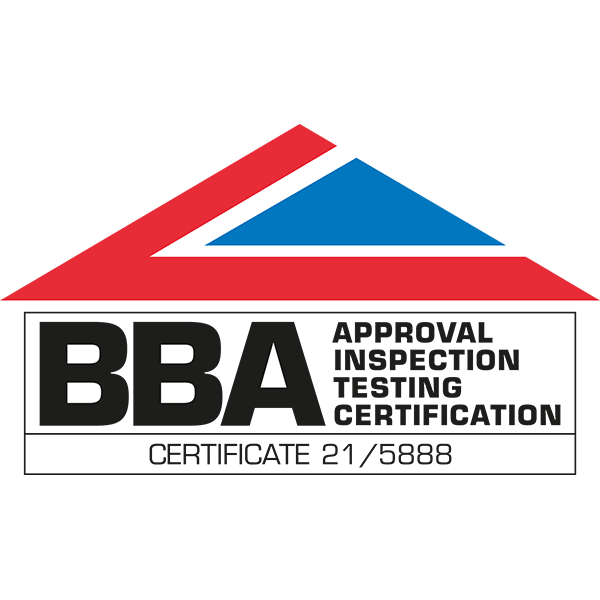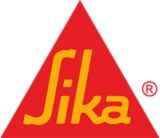
Parex® Monoblanco
A bright white, semi lighweight, one coat, weather resistant and breathable render for vertical masonry and concrete walls. MONOBLANCO is a bright white version of MONOREX GF.
- Bright white in colour
- Range of finishing options
- Suitable for diesel and electric spray machines

Usage
As an external render for application onto vertical masonry and concrete walls.Advantages
- Bright white in colour
- Range of finishing options
- Suitable for diesel and electric spray machines
Packaging
25 kg bags
Colour
FINISHES
- Fine Scraped
- Sponge or Float Smoothed*
- Trowel Smoothed*
- Spray Textured - from tyrolean style to heavy roughcast effect.
For additional information refer to the data sheet on Textured Mineral Finishes.
*The float/sponge/trowel smoothed finishes may vary in appearance, particularly due to different factors such as the line and level and condition of the substrate or the appearance of a slurry finish caused by over floating the surface. The latter may produce some micro cracking effect on the render surface which may affect the aesthetical appearance but does not affect its durability.
Product Details
APPROVALS / CERTIFICATES
EN998-1
BBA Certificate 21/5888
Composition
COMPOSITION
Hydraulic mortar containing:
- Cement, lime, siliceous and calcareous sands, mineral pigments and specific admixtures
Shelf life
12 Months from date of manufacture
Storage conditions
Dry frost free conditions
Compressive strength
CS II
Capillary absorption
W2
Reaction to fire
A1
Application
Mixing ratio
5-5.5 L per 25 kg bag
Consumption
Coverage is provided as a guidance only, excludes wastage and will vary subject to substrate conditions and thickness applied.
| USES | WEATHERPROOFING COAT | DECORATION |
| Substrate | Concrete blocks, bricks, etc | Concrete, base coat renders, etc |
| Scraped | 1.0 - 1.1 m2 @ 15 mm/25kg bag | 1.4 - 1.6 m2 @ 10 mm/25kg bag |
| Float Smoothed | 1.3 - 1.4 m2 @ 15 mm/25kg bag | 1.8 - 1.9 m2 @ 10 mm/25kg bag |
| Trowel /Sponged smoothed | 1.3 - 1.4 m2 @ 15 mm/25kg bag | 1.8 - 1.9 m2 @ 10 mm/25kg bag |
EQUIPMENT
EQUIPMENT REQUIRED
| Application by Machine | SPRAY RENDER MACHINE | CONSTANT MIX AND PUMP MACHINE |
| Pump Pressure | 10-12 bar (water) | 15-16 bar/360 water flow L/hr |
| Pumping Distance/Height | Up to 120 m/60 m approx | Up to 50 m/30 m approx |
| Powersource | Diesel | Electric, -Based on PFT G4/G5 |
Other machine settings may differ
APPLICATION
- Refer to and comply with the Substrate Preparation first.
- For very severe wind driven rain index locations, high exposure or coastal zones please contact Parex® for additional guidance as the render thickness may need to be increased and additional surface treatment may be recommended.
SUITABLE FOR
- Machine or manual applications.
- Ensure the product is mixed correctly with the correct water content and do not allow the render to cure too quickly as surface holes in the render could occur.
FOR WEATHERPROOFING APPLICATIONS TO CONCRETE BLOCKS, CLAY BLOCKS, LIGHTWEIGHT AIRCRETE BLOCKS, BRICKS, ETC.
SPRAY TEXTURED & SMOOTH SPRAY TEXTURED
- Apply a level, compact minimum 13 - 15 mm thick first coat. Allow to dry and then spray the Textured finish. The Smooth Textured appearance is obtained by pressing a plastic or stainless-steel float over the stiffened but not dry Textured finish.
SCRAPED FINISH
- Apply a level, ruled compact 18 mm thick coat, level the surface with a straight edge, spatula or trowel flat. Allow to dry (3-16 hours) and depending on the substrate and drying conditions, scrape the surface in small circular motions using a scraping tool, removing no more than 3 mm from the surface.
- This scraping process must remove any slight imperfections and bring the application to the specified finished thickness. Each elevation must be scraped at the same stage, as early scraping will result in a slightly darker shade and later scraping in a lighter shade.The minimum finished thickness after scraping is 15 mm.
- After scraping, any dust on the surface should be removed by brushing with a clean soft bristle brush. Always stand back and examine the whole surface for blemishes and unevenness. Errors must be corrected at this stage as rectification later is not practical.
FOR DECORATING WATERPROOF CONCRETE AND MASONRY SUBSTRATES, I.E. COVERED WITH AN EXISTING SOUND AND WEATHERPROOF RENDER.
SPRAY TEXTURED & SMOOTH SPRAY TEXTURED
- Apply a level, ruled, lined, compact minimum 5 - 8 mm thick first coat. Allow to dry and then spray the Textured coat. The Smooth Textured appearance is obtained by pressing a plastic or stainless-steel float over the stiffened but not dry Textured coat.
SCRAPED FINISH
- Apply a level, ruled compact 13 mm thick coat, level the surface with a straight edge, spatula or trowel flat. Allow to dry (3-16 hours) and depending on the substrate and drying conditions, scrape the surface in small circular motions using a scraping tool, removing no more than 3 mm from the surface.
SPONGE / FLOAT / TROWEL FINISHES*
- Apply a level, compact, minimum 10 mm thick coat. Obtain the finish with a stainless steel floating trowel, wooden, sponge or plastic float.
For ease of application and finish, avoid using AXEL 3000, ALGIREX or 751 LANKOLATEX in the top coat application of the trowel, float or sponge smooth finish.
FAQ
Every building element moves and all movement joints in the substrate must be replicated in the render finish, or cracking will appear. If it is a timber frame, then the movement joints in the timber frame (i.e. between panels) should also be considered in the render, even if they are not replicated in the outer blockwork.
The primary reason is air entrapment within the render and this is caused at application stage when the correct float and serrated spatula or derby tools have not been used to sufficiently aerate the render and break any bubbles to ensure there are no voids within the render.
Render should never be applied to a frozen substrate and the temperature should be 5° and rising before application should begin. Always protect newly applied render from freezing conditions. For more detailed information on cold weather applications, refer to the Technical Information sheet: Cold weather working - General guidance.
This is caused by incorrect application of render, including: applying render to a wet wall; render is applied too thin; masonry joints are recessed or raked out; the mortar used to bond the masonry is of a weak consistency or the mortar joints haven’t had enough time to cure after construction of the masonry.
No, as it will delay the curing time and compromise the chemical bond between the product and the substrate. You may also see efflorescence staining on the blockwork. If this is not removed completely from the substrate before the render is applied, the render will start to break down and delaminate.
There are a number of reasons cracks appear in external render. The most common are the substrate has cracks, bed joint reinforcement has not been applied at every two courses, above and below, or window or door openings or substrates and infill blocks are different strengths, which leads to differential movement. Bed joint reinforcement is a requirement of NHBC, LABC, Premier etc.
If the existing render substrate is well-bonded and there are no surface defects, delamination or cracks, then yes, new render can be applied over existing render.
Sika completed the acquisition of the French company Parex on May 23, 2019. Sika and Parex are two strong companies that are highly complementary in product offering and channel penetration and this acquisition has expanded our product portfolio for the Building Finishing market. Prior to this acquisition, Parex acquired established renders, insulated facades and aggregates company Enewall Ltd, based in Scotland.
Yes, our Mineral Render, External Wall Insulation (EWI) and Pointing Mortar training sessions are aimed at contractors, applicators and distributors who are looking to expand their knowledge or improve skills. Further details can be found on our Sika Wishaw Training Centre web page.
For Applicators and Trade Professionals, Sika Parex render products are available to purchase through our nationwide distributor partners.
You can find details of a local stockist on our web page: Find a Sika Render Stockist.
Please visit our contact us page where you can view an area map displaying contact details for our local Business Development Managers and Specification Managers. Contact details for our Technical Team can also be found on this page should you have any technical queries.
